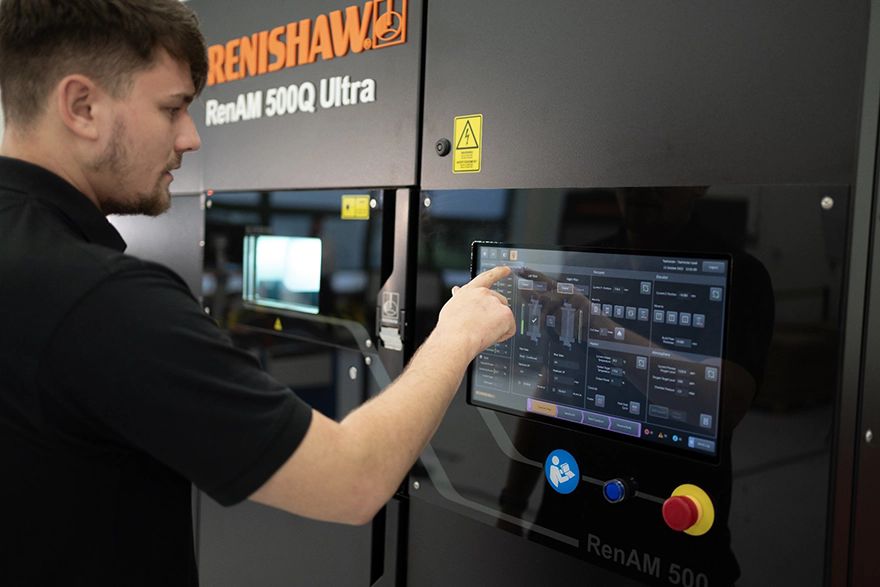 AM operator using the RenAM 500 Ultra
AM operator using the RenAM 500 UltraAn emerging trend in the additive manufacturing (AM) sector is the release of machines with larger bed sizes. While necessary to produce large components, some manufacturers are using large systems for the volume production of small parts. However, smaller machines that are optimised for productivity may deliver better return on investment (ROI).
Steven Crownshaw, head of AM sales at Renishaw, said: “Reducing cost per part is vital for greater AM adoption and, because the majority of part costs result from on-machine build time, a key priority for original equipment manufacturers (OEMs) has been making machines that can deliver reduced time per part. Making the machine bigger, so that it fits higher volumes of parts, is one approach to doing so. While the standard bed size is 250 x 250mm, there are now machines available with more than 1 x 1m build areas.
“The obvious reason to need a larger bed size is if you are producing large parts that do not fit in a standard 250 x 250mm footprint. However, only a minority of parts being produced using metal AM are large — most customers who approach us are producing small components, such as structural parts for automotive frames or medical implants. From my experience, 80% of parts customers ask
Renishaw about are designed to fit in a standard bed size.
“If you are looking for a system for volume production of small parts, a bigger platform is not always better — just because a larger machine enables you to build more parts per build, it does not guarantee it is more efficient or productive. To achieve optimum productivity, customers will need to make an informed decision about their application and which machine is more suitable.”
Important considerationsHe continued: “There are some important considerations related to bed size. One is whether your process is set up for a large number of parts coming off the machine at once. Consider the next steps in the chain, such as heat treatment, blasting, and post processing; does producing a larger number of small parts at once introduce the risk for bottlenecks later in the process chain? Another factor is that producing a large number of parts on a single system can introduce greater risk in the case of a build failure.
“Return on investment (ROI) is an important factor. The cost of a large machine can lead to a long payback time and it may be that two smaller machines could deliver better return on investment (ROI), while managing the risk of build failure better, and enabling a smoother process chain.”
There are other approaches to driving productivity on an AM system that do not involve increasing bed size. Technologies that increase laser on time, turn machines around quickly, and simplify powder handling, can greatly improve productivity. For example, building powder handling processes, like sieving, into the machine so that unmelted powder does not have to be removed to be recirculated, can remove additional processing time. Some manufacturers are also incorporating vacuum processes into their machines that enable the system to start processing earlier, by more quickly removing oxygen, while reducing the consumption of argon gas.
Mr Crownshaw added: “One of the biggest issues with laser on time on a laser powder bed fusion machine is recoating time, which has historically had a negative impact on build speed, because the laser stops firing while the recoater is moving. When building 1,000s of layers, a re-coating time of around 9 to 11sec per layer can add up to tens of hours over an entire build.”
He concluded: “Renishaw’s Tempus technology has overcome this and can reduce build time by up to 50%. By making AM systems faster, we can drastically reduce cost per part and increase production output — without the need for a larger machine.”